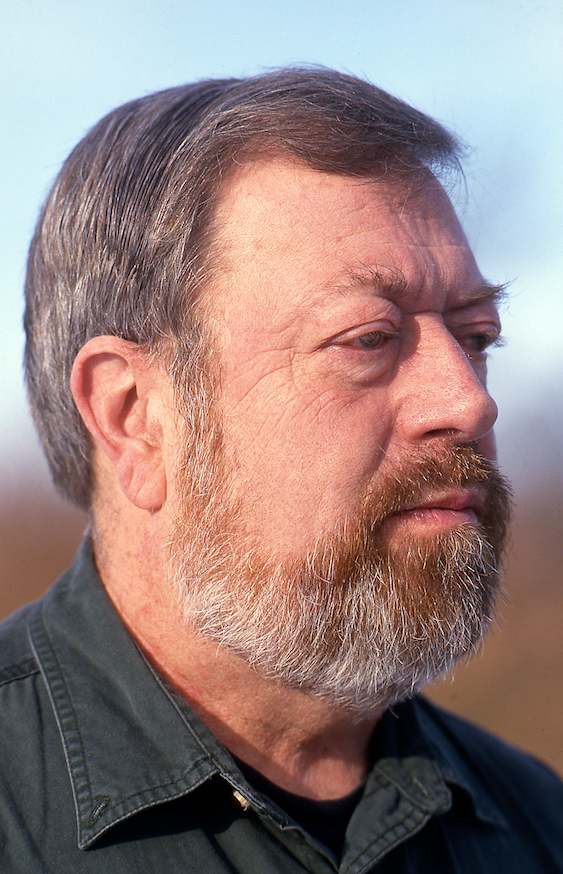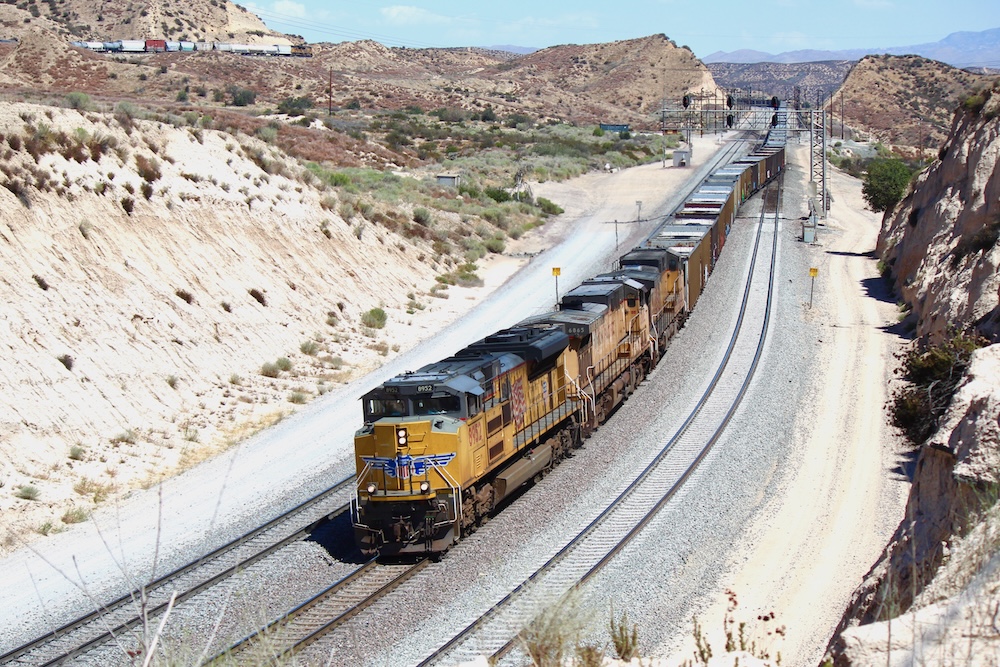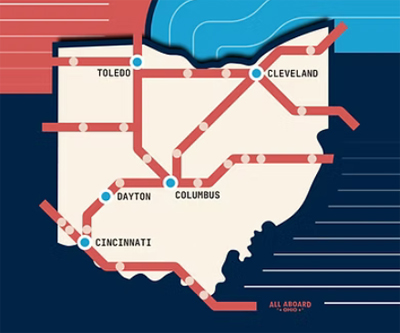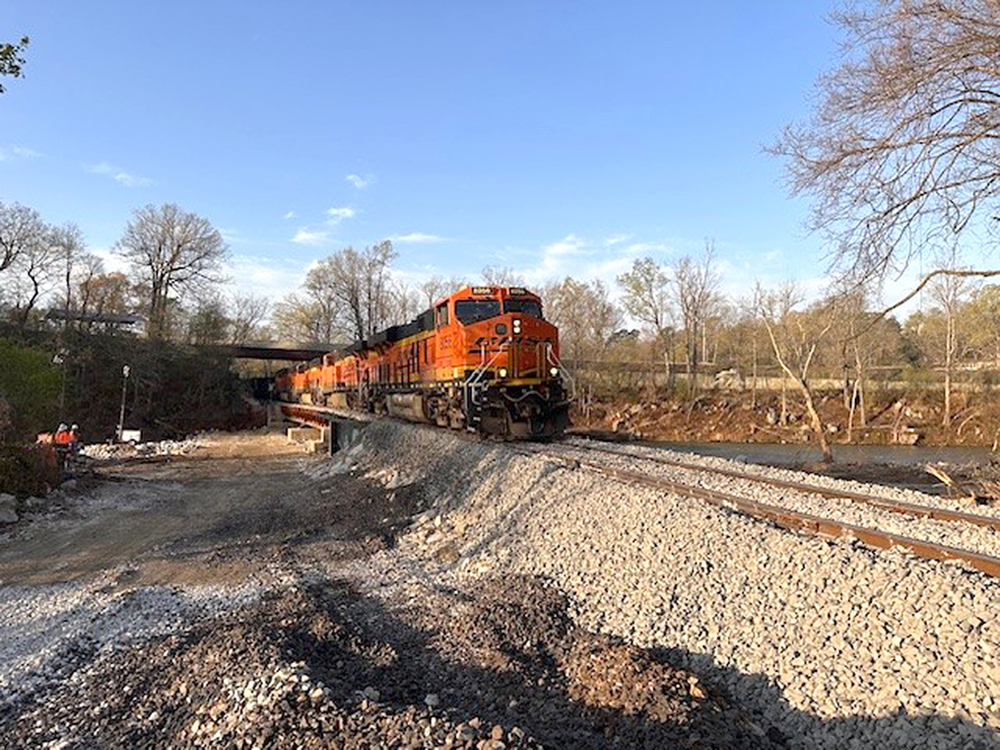Gruber died Oct. 9, 2018, at a hospital in Madison after a brief illness. He was 82.
Born in Chicago in 1936, Gruber spent most of his life in Wisconsin, moving with his family early in childhood to Prairie du Sac, a small town on the Wisconsin River not far from Madison. Some of his earliest encounters with trains came there, courtesy of the Milwaukee Road trains that ran through town on a branch line serving the sprawling Badger Ordnance Works nearby.
There were other early influences as well, including family trips to ride the White Pass & Yukon in Skagway, Alaska, and the Rio Grande’s San Juan passenger train out of Alamosa, Colo. The Colorado narrow gauge made a strong impression on young Gruber, and he returned later in life to make some of his most significant photographs.
Meanwhile, Wisconsin railroads continued to attract him as he gradually expanded his photographic skills. The state’s most prominent carriers, Milwaukee Road, Soo Line, and Chicago & North Western, were favorite targets, of course, but also such exotic attractions as Green Bay & Western and the North Shore Line.
A North Shore trip led to Gruber’s first photograph published in Trains, an image of shivering railfans shooting an excursion on the interurban line at Northbrook, Ill., in February 1960.
That first photo in Trains sparked a long and fruitful relationship with longtime Editor David P. Morgan, who became a big fan of Gruber’s approach, especially his pioneering use of both telephoto lenses and his talent for getting up close and personal with professional railroaders.
Morgan went on to feature Gruber’s photographs in numerous cover stories, including coverage of the demise of the North Shore in the January 1963 issue, a photo essay about Chicago Union Station in August 1965, and a valedictory for the Denver & Rio Grande Western in a celebrated all-narrow-gauge issue in October 1969.
Gruber and Morgan traveled together frequently, perhaps most memorably during the August 1966 inaugural rips of Southern 2-8-2 No. 4501. Two years later, Gruber’s photos were the backbone of Morgan’s book Locomotive 4501. The editor wrote that Gruber was always “on top of the action, however unexpected and regardless of the hour. His pictures tell it like it was.”
Although Gruber followed the work of the early stars of railroad photography — especially his friend Philip R. Hastings, but also Jim Shaughnessy and William D. Middleton — his primary influence was the work of two favorite newspaper photographers, Dick Sroda of the Wisconsin State Journal and Jim Stanfield of the Milwaukee Journal. News photography inspired Gruber to go beyond what he was seeing in Trains.
“It was a time when press photographers and journalists were interested in what people were doing,” Gruber said. “I saw this as an underrepresented area of railroad photography, and I took advantage of every opportunity to document railroad people at work, rather than concentrating on equipment.”
Gruber even considered a career in newspapers, applying at one point for a reporter’s job at the Milwaukee Journal, but later finding a position in publications and public relations at his alma mater, the University of Wisconsin. He remained with the university’s publications staff for 35 years.
Always restless and ready to do more work, Gruber for years went beyond his day job by editing the Gazette of the Mid-Continent Railway Museum, where he was an active member for many years. During Gruber’s tenure, the publication was known for the depth of its articles and the elegance of its design.
He later parlayed his Gazette experience into his editorship of Vintage Rails, a quarterly, and later bimonthly, magazine about railroad history and culture, launched in 1995 by Pentrex. The richly illustrated magazine found an intensely loyal readership but was inexplicably shut down by Pentrex just four years later.
Disappointed but unbowed, Gruber turned more of his energy toward what is likely his greatest accomplishment, his 1997 founding of the Center for Railroad Photography & Art, based in Madison and today a thriving organization known for its growing archives, its publications and exhibits, and its popular “Conversations” symposium held annually in April at Lake Forest College near Chicago.
Gruber’s founding of the Center grew, in part, out of his strong sense of community. “I had become curious about railroad photographers — who they were, their backgrounds, their ideas about photography,” Gruber explained. He continued to serve on the Center’s board the rest of his life.
Gruber authored or co-authored a number of books, including Travel by Train: The American Railroad Poster, 1870-1950, with Michael Zega (Indiana University Press, 2002); Classic Steam (Fall River Press, 2009); and Railroaders: Jack Delano’s Homefront Photography (CRPA, 2015). In 1994, the Railway & Locomotive Historical Society recognized Gruber’s contributions with its Senior Achievement Award.
Gruber is survived by his wife, Bonnie, two sons, Richard and Timothy, and two grandchildren. Funeral arrangements are pending.















It was an honor to work with John on Vintage Rails. Not only was he an amazing photographer and a great guy to work with; he was also a wonderful human being. My condolences to his family and friends.
Remembering John Gruber.
In Madison, Wisconsin during the Fall of 1962, due to the fact that my father and Mr. Gruber worked in the same department in the “SOB” (State Office Building) near the capitol, it somehow came about that he learned I had excess Lionel O27 stuff which he was interested in buying for his little boy. He came to our place and left with a Jersey Central switcher, some rolling stock, caboose, a bunch of track, and a tiny transformer, wire, lockon, etc. However, the conversation was far ranging railroadwise: Trains mag. Milwaukee Road, photography. He was unfailingly polite and interested in my sophomoric efforts. Sometime later he invited me to accompany him on a fantrip behind CB&Q 5632. We drove to Aurora to board there, an example of his good planning. A memorable experience! The great O-5 Northern howling along at the limit; packed in the open gon with steam, smoke, and cinders pouring over us. A couple of run-bys enroute to the Mississippi and back, then debarking at Aurora and driving home to Madison. This was the first of several similar outings during high school years. Then college, girls, and my father’s retirement and family move from Madison precipitated the loss of direct contact with John. Nonetheless, I was not surprised at his spearheading the formation of the Center and its subsequent success. What a legacy. And with luck I will find those old B&W photos and negatives to donate to the Center in memoriam.
Curtis A. Larson
Vintage Rails was possibly ahead of its time in content, but Pentrex probably got cold feet, with the oncoming curse of social media and moving of paper magazines to the internet. I finally obtained a full set of VR last year and was reminded that Kalmbach’s CLASSIC TRAINS has rarely measured up to its predecessor.
John Gruber’s passing marks the loss of another link to the awesome publication that was TRAINS during the DPM years.
Subscriber: Another fine publication that Kalmbach derailed was Trains Illustrated.
In recent times, White River Productions has assumed control of RMC, TRP, NG&SL Gazette, Railroads Illustrated and most recently O Scale Trains. They also publish other high quality print publications. All survive as of this writing.
Classic Trains should contain no less than 100 pages as a quarterly but according to the Powers-to-Be advertising rates determine the number of pages in a magazine. I personally know one former long term advertiser who dropped his 1/4″ ads because the rates continued to rise to the point he could no longer justify much less afford running them. They used to appear in Trains and MR every month!
Sadly, Kalmbach today appears to have taken on more of a Madison Avenue attitude instead of the Main Street USA approach to running the business that Al Kalmbach not only believed in but practiced as long as he ran the company at 1027 North 7th Street, Milwaukee.
RIP John and condolences to family members.
A Trains Special Issue devoted to Mr. Gruber’s work should be taken up at the next board meeting.
We’ve added a small gallery of John’s photography on the Center’s site:
http://www.railphoto-art.org/john-gruber/
A funeral service will be at Luther Memorial Church, 1021 University Ave., at 1 p.m. on Saturday, October 27, 2018, with visitation at noon and a reception after the service.
His legacy lives on in those of us influenced at early ages by his transcendent approach to rail photography and his appreciation of history and
photojournalism.
No one except maybe Lucius Beebe had more of an impact on railroad photography and photographers than John Gruber. We met at Mid Continent in the 1970’s, became friends and made a number of photo oriented trips together during which I learned a lot about photography, especially with the sun somewhere other than at my back. Discussions on these trips led to my later involvement in the formation of his Center for Railroad photogrsphy & Art.
John was a follower and photographer of the CNW’s steam program with Mid Continent’s 1385 – to the extent that I kidded him about being one of our groupies. I always admired and appreciated his interest in and photography of railroaders and railroad work. He’s gone but his legacy isn’t and won’t be. R.I.P.
His latest work on the life of Lucius Beebe and Charles Clegg co-authored by John Ryan should be mentioned. Its exploration of the “love story” between and Lucius and Chuck is a great example of the John’s interest in the people side of the railroad and railfan world.
I was privileged to meet him just over two weeks ago at the California State Railroad museum.
I had the pleasure of meeting John many times, and although he was quiet guy, he was always an unfailingly nice person and despite his many accomplishments, he had no ego to speak of. He remained excited about and loved to talk trains ever time I met him. It is a huge loss. Condolences to his family and friends.
One of the giants of railroad photography is gone. I was first exposed to John Gruber’s work when I picked up a back issue of the January 1963 TRAINS magazine where John’s photographs were accompanied by text written by the equally legendary David P. Morgan.
I am privileged to have met John on a few occasions. His remarkable photographs will live on as his legacy to us all.
A gallery of his photographs would be nice.